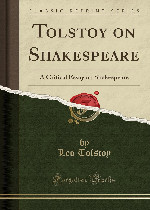
Tolstoy on Shakespeare(托尔斯泰论莎士比亚) 立即阅读
Mr. Crosby's article on Shakespeare's attitude toward the working classes suggested to me the idea of also expressing my own long-established opinion about the works of Shakespeare, in direct opposition, as it is, to that established in all the whole European world. Calling to mind all the struggle of doubt and self-deceit,—efforts to attune myself to Shakespeare—which I went through owing to my complete disagreement with this universal adulation, and, presuming that many have experienced and are experiencing the same...
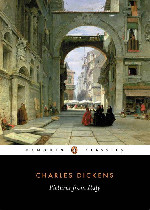
Pictures from Italy(意大利风光) 立即阅读
Pictures from Italy is a travelogue by Charles Dickens, written in 1846. The book reveals the concerns of its author as he presents, according to Kate Flint, the country "like a chaotic magic-lantern show, fascinated both by the spectacle it offers, and by himself as spectator". In 1844, Dickens took a respite from writing novels and for several months traveled through France and Italy with his family. They visited the most famous sights: Genoa, Rome, Naples (with Vesuvius still smouldering), Florence and Venice. In his travelogue the author portrays a nation of great contrasts: grandiose buildings and urban desolation, and everyday life beside ancient monuments. But it is his encounters with Italy's colorful street life that capture the imagination.
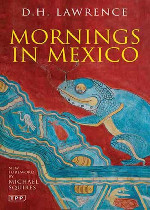
Mornings in Mexico(墨西哥早晨) 立即阅读
Mornings in Mexico is a collection of travel essays by D. H. Lawrence, first published by Martin Secker in 1927. These brief works display Lawrence's gifts as a travel writer, catching the 'spirit of place' in his own vivid manner. Lawrence wrote the first four of these essays at the same time as he was completing and revising his Mexican novel, The Plumed Serpent (1926). Three of the others, about Pueblo Indians, were written earlier in 1924 in New Mexico, and the final piece "A Little Moonshine with Lemon" came later as Lawrence remembered his New Mexico ranch (Kiowa Ranch) from Italy.
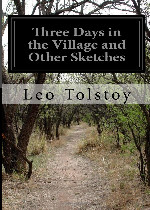
Three Days in the Village And Other Sketches(乡村三日) 立即阅读
Something entirely new, unseen and unheard-of formerly, has lately shown itself in our country districts. To our village, consisting of eighty homesteads, from half a dozen to a dozen cold, hungry, tattered tramps come every day, wanting a night's lodging. These people, ragged, half-naked, barefoot, often ill, and extremely dirty, come into the village and go to the village policeman. That they should not die in the street of hunger and exposure, he quarters them on the inhabitants of the village, regarding only the peasants as "inhabitants."
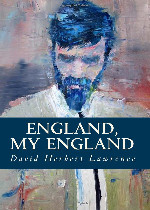
England, My England and Other Stories(英格兰,我的英格兰) 立即阅读
England, My England is a collection of short stories by D. H. Lawrence. Individual items were originally written between 1913 and 1921, many of them against the background of World War I. Most of these versions were placed in magazines or periodicals. Ten were later selected and extensively revised by Lawrence for the England, My England volume. This was published on 24 October 1922 by Thomas Seltzer in the US. The first UK edition was published by Martin Secker in 1924.
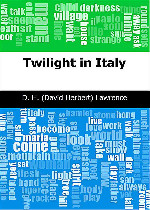
Twilight in Italy(意大利的黄昏) 立即阅读
Twilight in Italy describes Lawrence's time as an educated working-class Englishman living among the Italian working men and women in the region around Lake Garda, from the Austrian Alps to the North, to Switzerland and finally Como and Milan. He captures the psyche of Italian peasants without ever romanticising or patronising them. His quick intuition locks onto their harsh, narrow lives and deep primitive emotions, exploring the very soul of Italy and its approach to life, death, belief, love, sexuality and change.
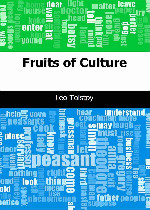
Fruits of Culture, aka The Fruits of Enlightenment, (1889-90, pub. 1891) is a play by the Russian writer Leo Tolstoy. It satirizes the persistence of unenlightened attitudes towards the peasants amongst the Russian landed aristocracy. In 1891 Constantin Stanislavski achieved success when he directed the play for his Society of Art and Literature organization.
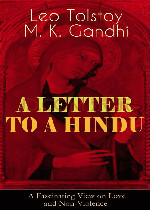
A Letter to a Hindu(给一个印度人的信) 立即阅读
"A Letter to a Hindu" (also known as "A Letter to a Hindoo") was a letter written by Leo Tolstoy to Tarak Nath Das on 14 December 1908. The letter was written in response to two letters sent by Das, seeking support from the famous Russian author and thinker for India's independence from British colonial rule. The letter was published in the Indian newspaper Free Hindustan. The letter caused the young Mohandas Gandhi to write to the world-famous Tolstoy to ask for advice and for permission to reprint the Letter in Gandhi's own South African newspaper, Indian Opinion, in 1909.
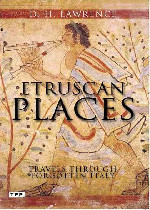
Etruscan Places(伊特鲁里亚的地方) 立即阅读
The Etruscan civilization, which flourished from the eight until the fifth centuries BC in what is now Tuscany, is one of the most fascinating and mysterious in history. An uninhibited, elemental people, the Etruscans enthralled D. H. Lawrence, who craved their "old wisdom," the secret of their vivacity and love of life. The exhilaration of Lawrence in his Etruscan adventures stands in stark contrast to his intimations of the darkness of Mussolini's Italy at a time when Europe was beginning its inexorable drift toward tragedy.
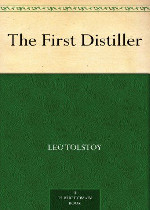
The First Distiller(托尔斯泰著戏剧) 立即阅读
CHARACTERS A PEASANT. { WIFE. HIS { MOTHER. { GRANDFATHER. { LITTLE DAUGHTER. A NEIGHBOUR. FOUR VILLAGE ELDERS. OLD WOMEN, WOMEN, GIRLS AND LADS. THE CHIEF OF THE DEVILS. HIS SECRETARY. A DANDY IMP. THE OFFICIALS' IMP. THE PEASANTS' IMP. SENTINELS, DOORKEEPERS AND IMPS.